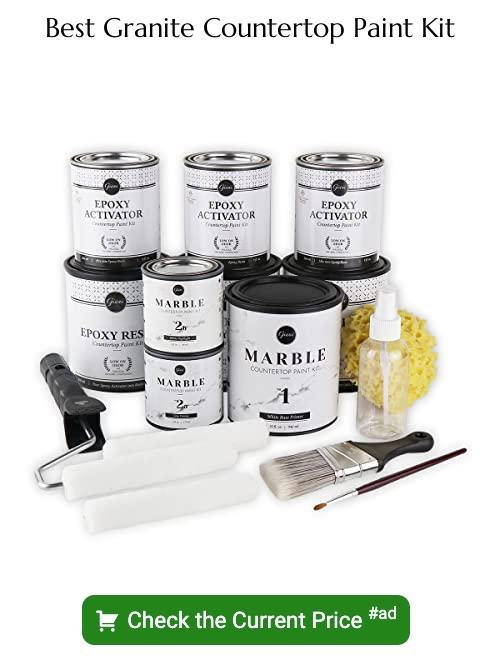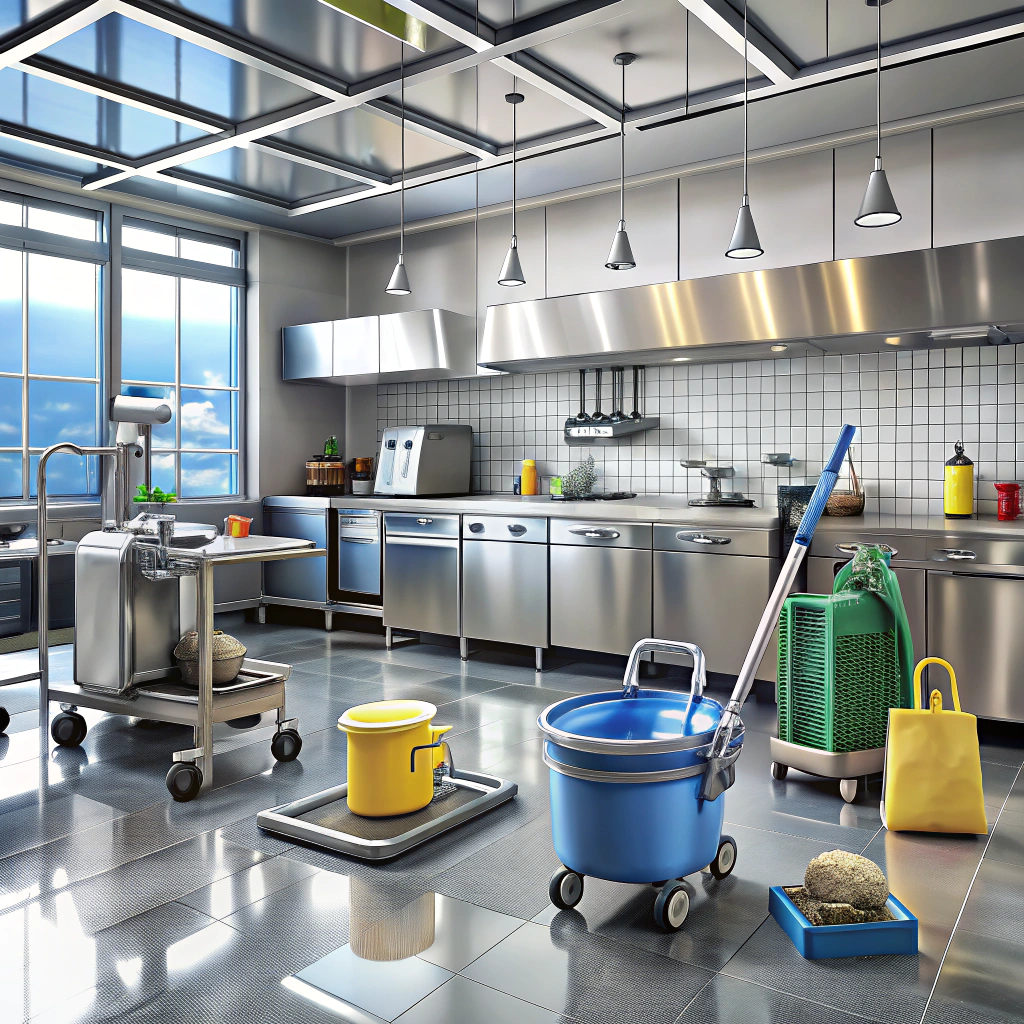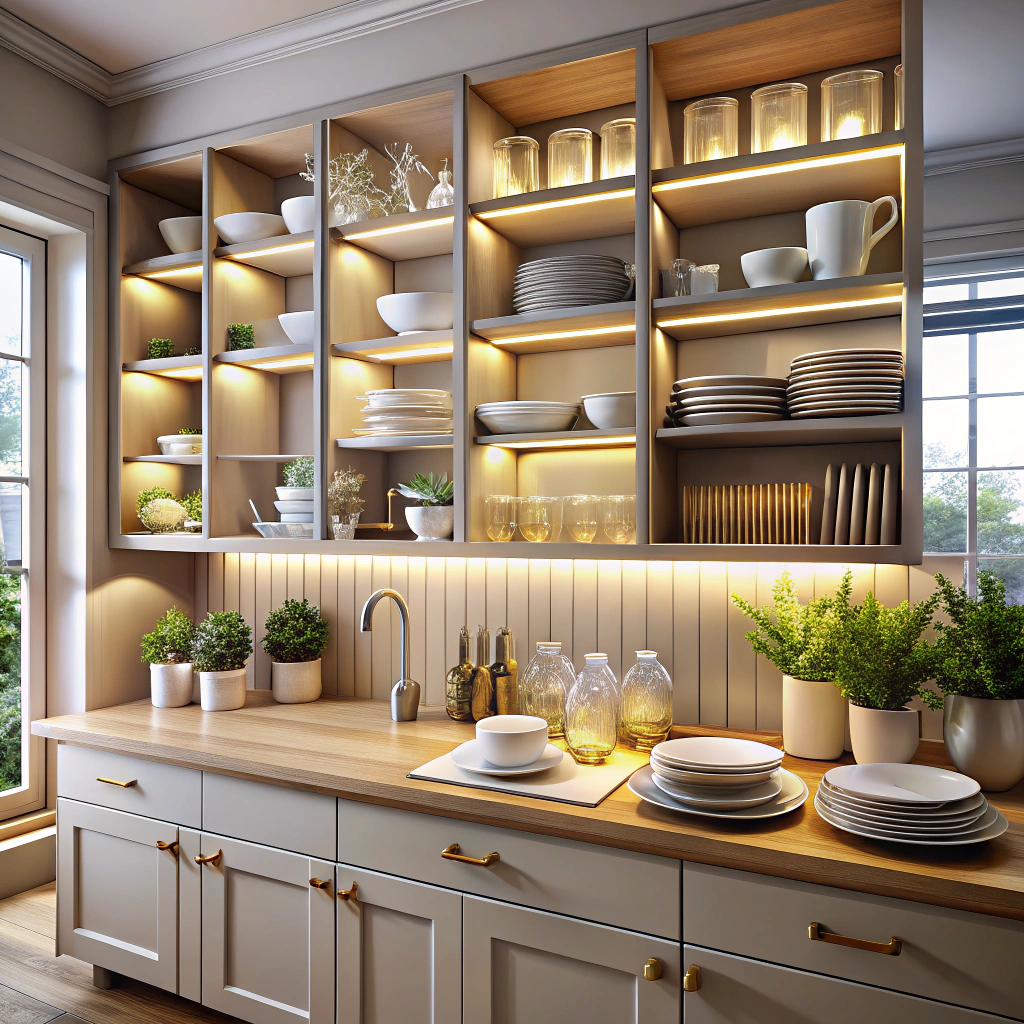Last updated on
Discover the transformative power of painting your kitchen granite countertops with our easy-to-follow guide that will refresh and revitalize your space in no time.
Are you tired of your outdated and dull kitchen countertops? Are you looking for an affordable way to give them a fresh new look? Painting your granite countertops might just be the solution you’re looking for! Yes, you read that right. With the right tools and techniques, it’s possible to transform your kitchen counters into a stunning focal point without breaking the bank.
In this article, I’ll walk you through the step-by-step process of painting your granite countertops and share some tips on how to achieve a professional-looking finish. So, let’s roll up our sleeves and get started!
What's Inside
Why Paint Granite Countertops?
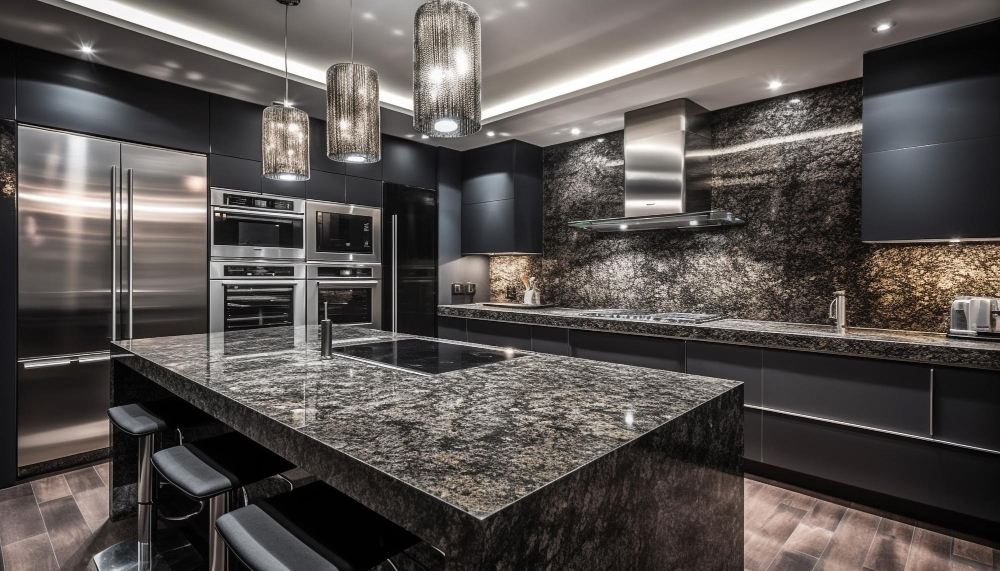
Granite countertops are known for their durability and beauty, but they can also be expensive. Painting them allows you to achieve the same high-end look without spending a fortune on new counters.
Plus, painting your granite countertops gives you more control over the color scheme of your kitchen and allows you to customize it according to your taste. Whether you want a bold statement piece or something more subtle that complements other elements in the room, painting is an excellent option that won’t break the bank!
Can You Paint Granite Countertops?
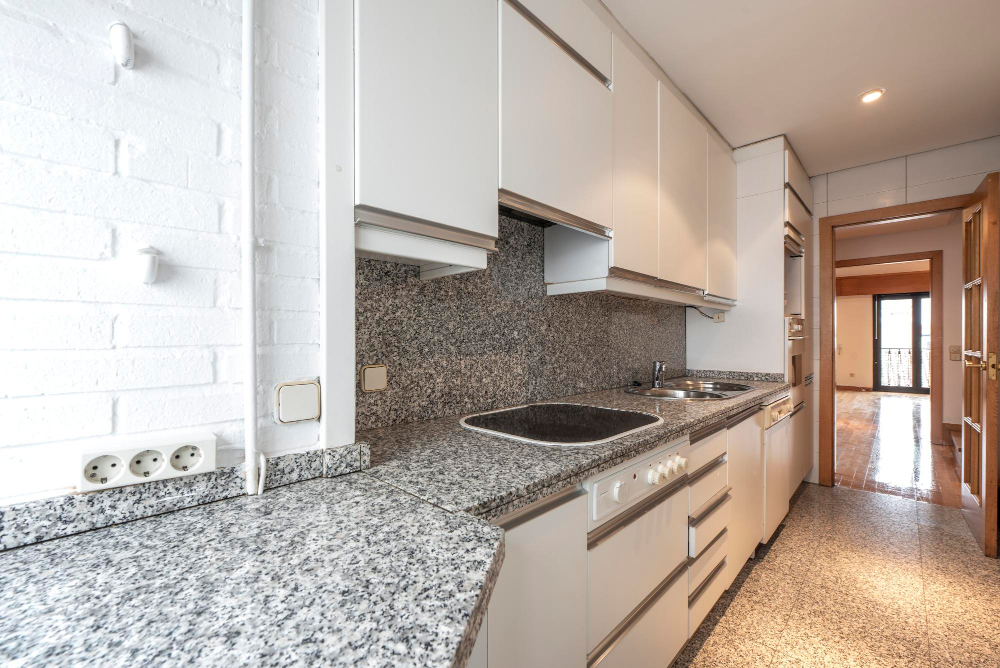
There are some important things you need to consider before starting this project.
Firstly, not all types of granite can be painted. If your countertop has a glossy finish or is made from polished black or dark-colored stone, painting may not work as well as expected.
If the surface of the countertop is chipped or damaged in any way, painting may only serve as a temporary solution and will likely require frequent touch-ups.
Secondly, it’s essential that you use high-quality paint specifically designed for use on surfaces like granite and other natural stones. Using regular wall paint will result in an uneven finish that won’t last long.
Lastly but most importantly – proper preparation and application techniques are crucial when painting any surface including Granite Countertops; otherwise peeling could occur after just days of applying new color onto old ones.
Choosing the Right Paint

Not all paints are created equal, and some may not adhere well to the smooth surface of granite. When selecting paint for your project, look for one that is specifically designed for use on countertops or other high-traffic surfaces.
Acrylic latex paints are a popular choice because they dry quickly and have low levels of volatile organic compounds (VOCs). They also offer good adhesion and durability when applied correctly.
Epoxy-based paints are another option but require more preparation work before application.
It’s important to note that oil-based paints should be avoided as they tend to yellow over time, especially in areas exposed to sunlight. Avoid using regular wall paint as it will not hold up well under daily wear-and-tear.
When choosing colors, consider those that complement your kitchen decor while also providing contrast with the cabinets or walls. Neutral shades like gray or beige can create an elegant look while bolder hues like blue or green can add personality and character.
Choosing the Right Countertop Resurfacing Kit
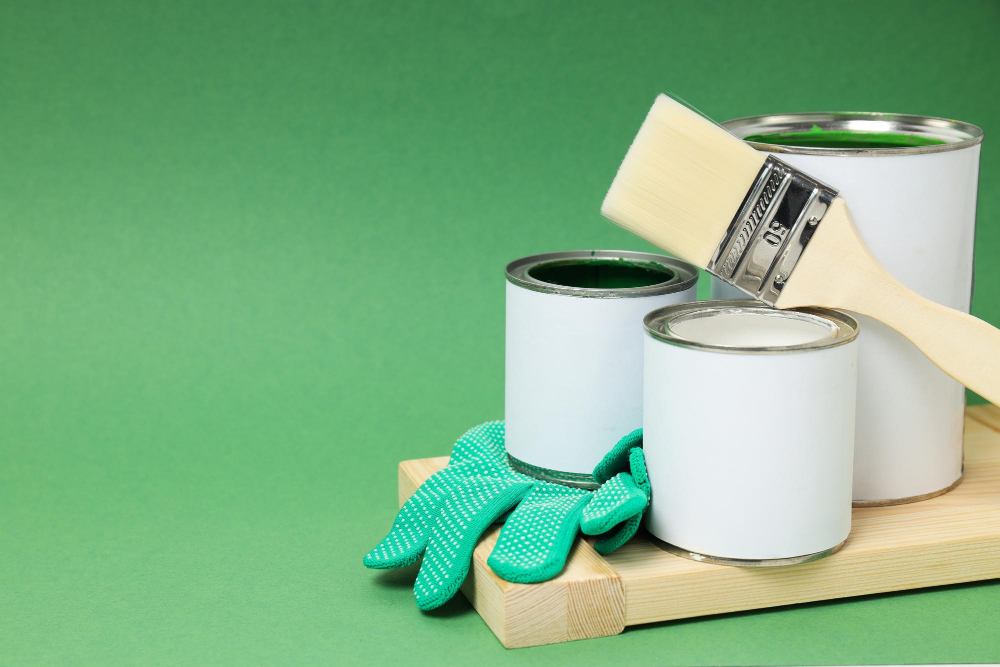
There are many options available in the market, and selecting one that suits your needs can be overwhelming. However, with a little research and careful consideration of factors such as durability, ease of use, color selection options and price range you can make an informed decision.
One popular option for resurfacing kitchen countertops is a two-part epoxy paint kit that includes both primer and paint. These kits come in various colors to match any decor style or preference.
Another option is a stone-like coating system which creates an authentic-looking granite finish on top of existing surfaces without requiring extensive preparation work or specialized tools.
It’s important to note that not all countertop resurfacing kits are created equal; some may require more prep work than others while some may have longer drying times before they’re ready for use again. Therefore it’s essential to read reviews from other users who have tried these products before making any purchase decisions.
Preparing Your Workspace
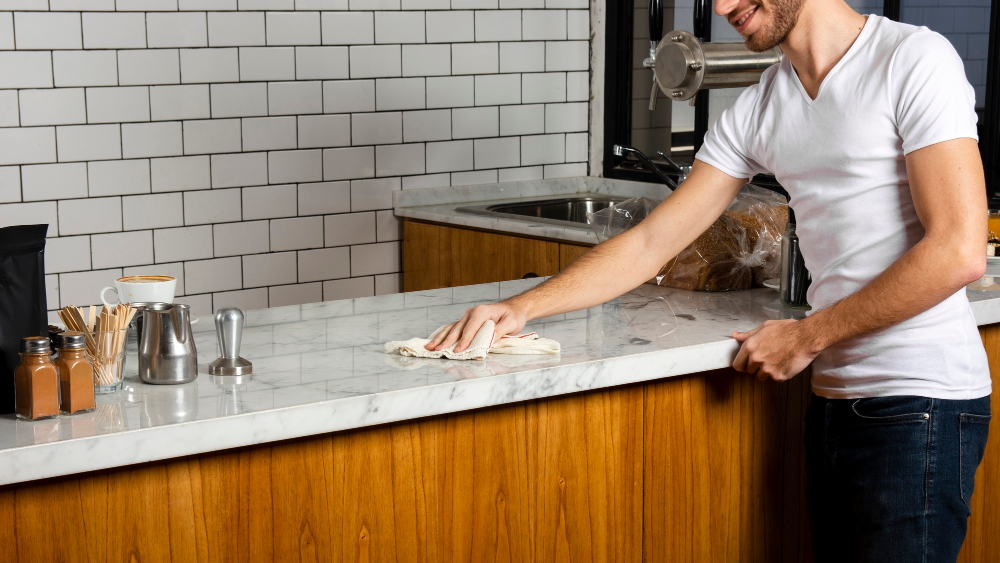
This will ensure that the process goes smoothly and that you achieve a professional-looking finish. Start by clearing off all items from the countertop surface and removing any appliances or fixtures attached to it.
Next, cover any surrounding surfaces with drop cloths or plastic sheets to protect them from paint splatters. You should also tape off areas around the countertop where it meets walls or cabinets using painter’s tape.
Make sure there is adequate ventilation in your workspace as well since some paints can produce fumes that may be harmful if inhaled for extended periods of time. Open windows and doors if possible, use fans, wear protective gear such as gloves and masks when necessary.
Necessary Materials and Tools
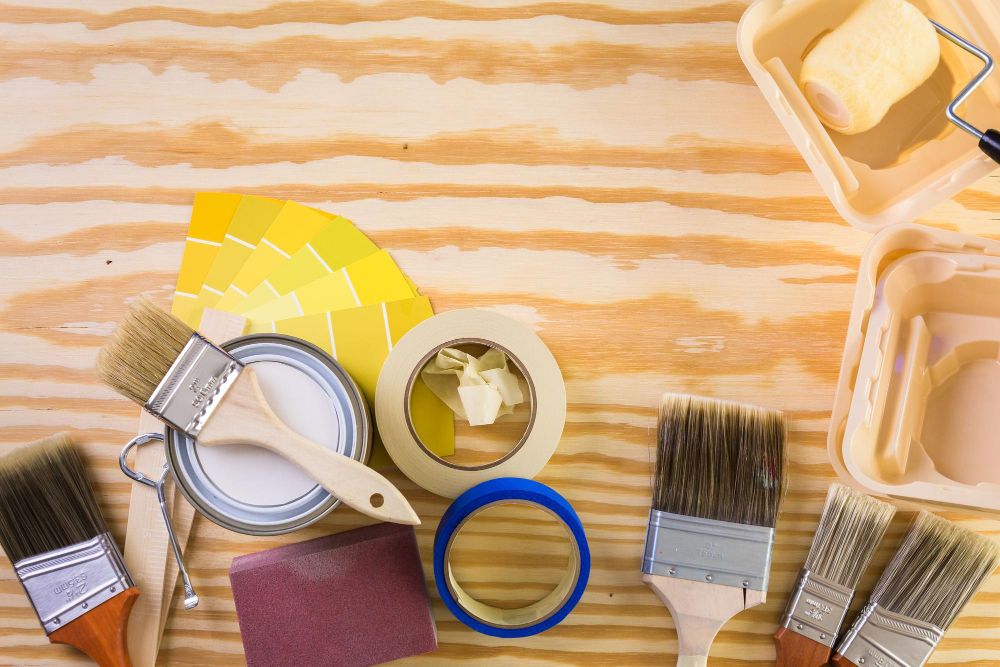
Here are some of the things you’ll need:
1. Painter’s tape: This will help protect areas around your countertop that you don’t want to paint.
2. Sandpaper: You’ll need sandpaper with different grits (120-grit and 220-grit) for smoothing out any rough spots on the surface.
3. Tack cloth or microfiber cloth: These cloths will be used for cleaning up dust particles after sanding.
4. Primer: A high-quality primer is crucial in ensuring that your paint adheres well to the surface of your countertop.
5. Paintbrushes and rollers: Choose brushes and rollers appropriate for use with oil-based paints or epoxy coatings, depending on what type of product you’re using.
6. Paints/Countertop Resurfacing Kits – Select a kit designed specifically for painting granite countertops; these kits typically include everything needed from primers, basecoats, topcoats as well as instructions.
7. Sealer- A clear sealer is required once painted surfaces are dry completely.
Cleaning the Countertops
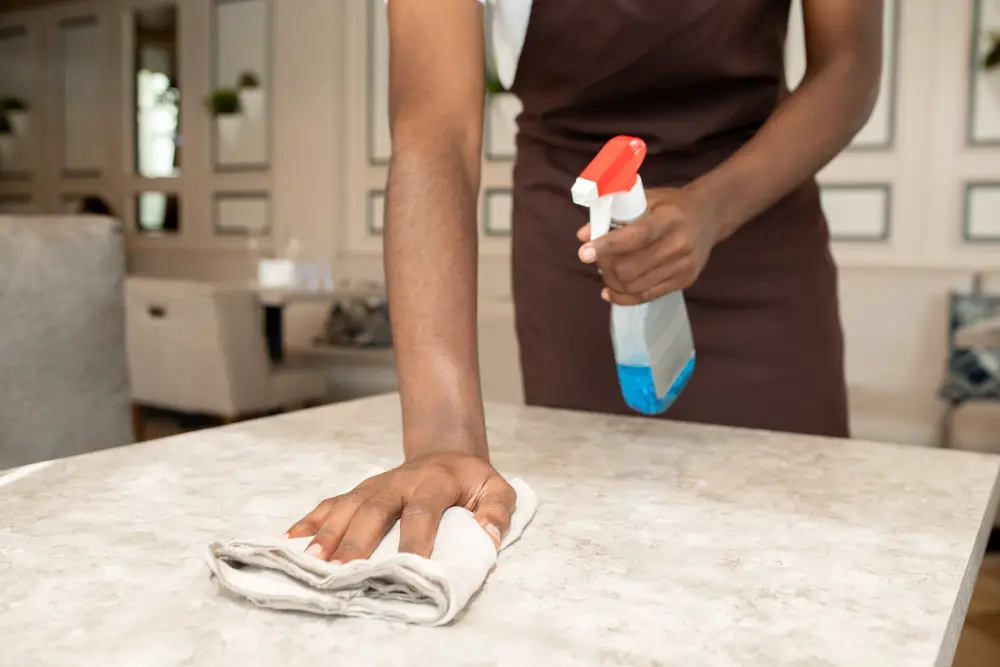
Any dirt, grease or grime on the surface can prevent the paint from adhering correctly and lead to an uneven finish. Start by wiping down your counters with a damp cloth or sponge and mild soap solution.
Avoid using harsh chemicals that could damage the granite surface.
Next, rinse off any soap residue with warm water and dry the countertop completely using a clean towel or paper towels. Make sure there are no streaks left behind as they will show up under your new paint job.
If you notice any stubborn stains that won’t come off with regular cleaning methods, try using a specialized stone cleaner designed for use on granite surfaces instead of abrasive cleaners like baking soda or vinegar which can scratch and dull its shine over time.
Preparing the Countertops for Painting
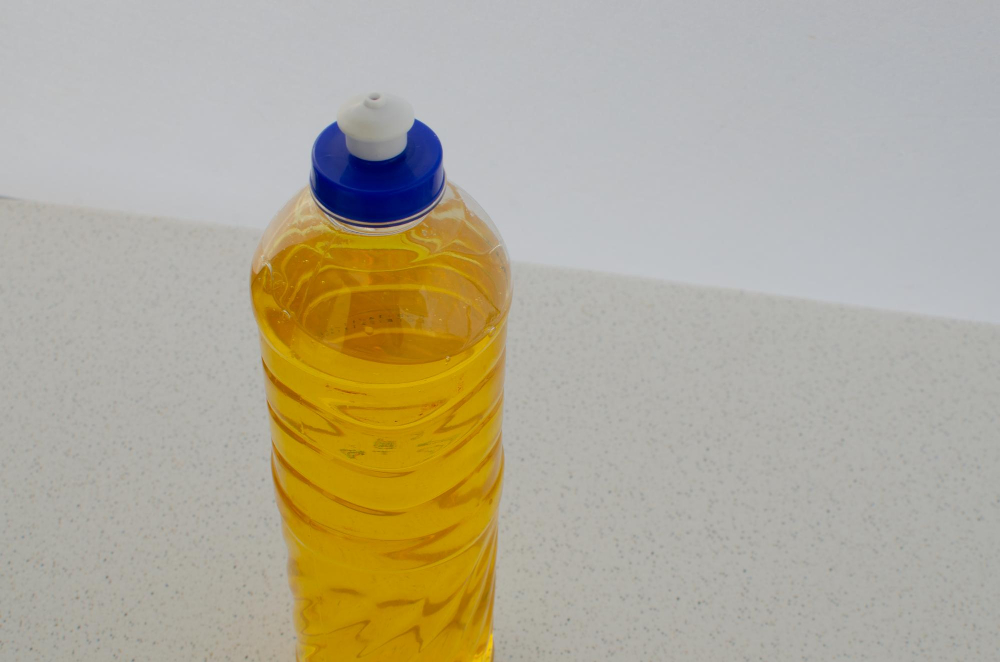
This step is crucial for ensuring that the paint adheres well and lasts longer. The first thing you need to do is clean your countertops thoroughly with soap and water or a degreaser solution to remove any dirt, grease, or grime buildup.
Next, use a fine-grit sandpaper (220 grit) to lightly sand the surface of your countertop in circular motions until it feels slightly rougher than before.
Afterward, wipe down the entire area with a damp cloth or sponge and let it dry completely before moving on to priming. It’s important not only that all dust particles are removed but also that there are no remaining residues from cleaning products as they can interfere with adhesion.
Sanding the Surface
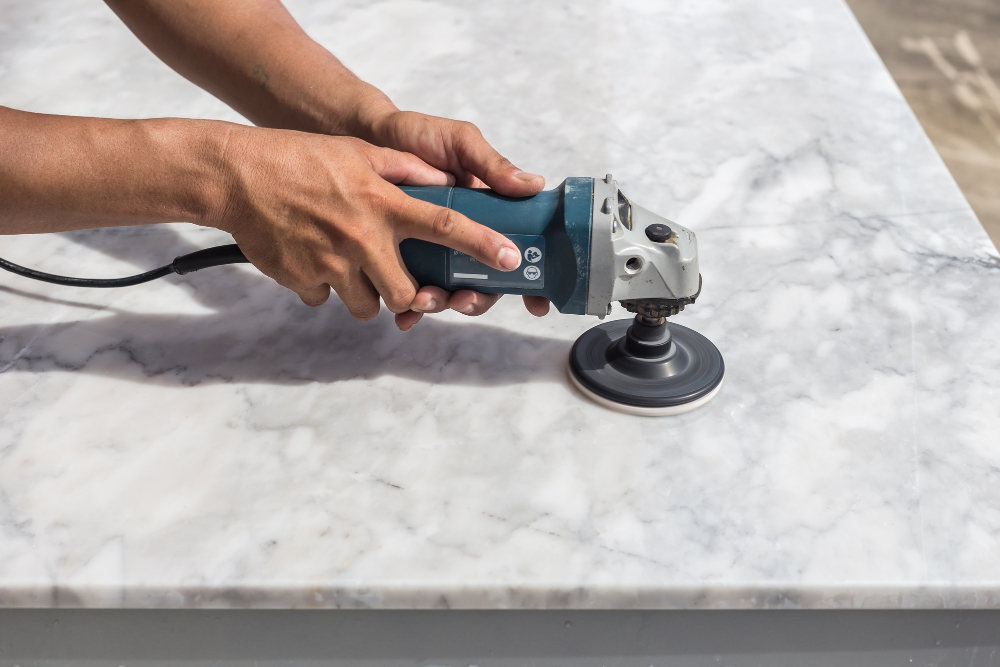
Sanding is a crucial step in this process as it helps to create a rough texture that allows the paint to adhere better. To sand your countertops, you’ll need 220-grit sandpaper and an orbital sander or sanding block.
Begin by cleaning the countertop thoroughly with soap and water, then dry it completely before starting. Next, use the 220-grit sandpaper on an orbital sander or manually with a hand-held block of wood wrapped in fine grit paper (to avoid scratching) and gently go over all areas of your countertop until they are uniformly dull.
Be careful not to oversand any particular area as this can cause unevenness on surfaces when painted later on; instead work slowly but steadily across each section until everything looks evened out without leaving any scratches behind.
Applying Primer
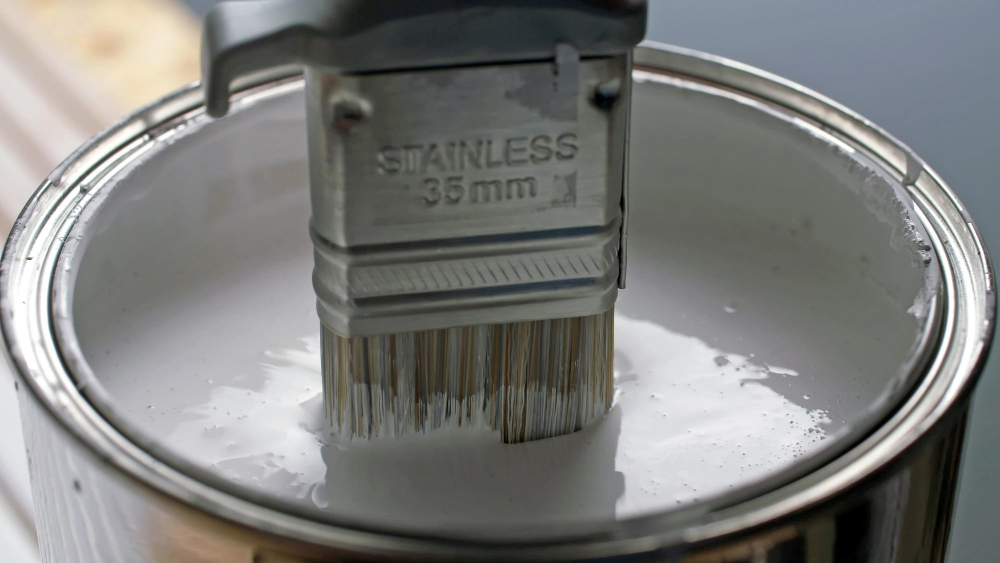
A good quality primer will help the paint adhere better and ensure that the finish lasts longer. Choose a high-quality bonding primer specifically designed for use on surfaces such as granite or stone.
To begin, clean your countertop thoroughly with soap and water, then dry it completely before applying any paint or primer. Once you’ve cleaned the surface of all dirt and debris, apply an even coat of bonding primer using a brush or roller.
Make sure to follow manufacturer instructions regarding drying time between coats if multiple coats are necessary. Allow ample time for each layer to dry completely before proceeding with additional layers.
Selecting Appropriate Colors
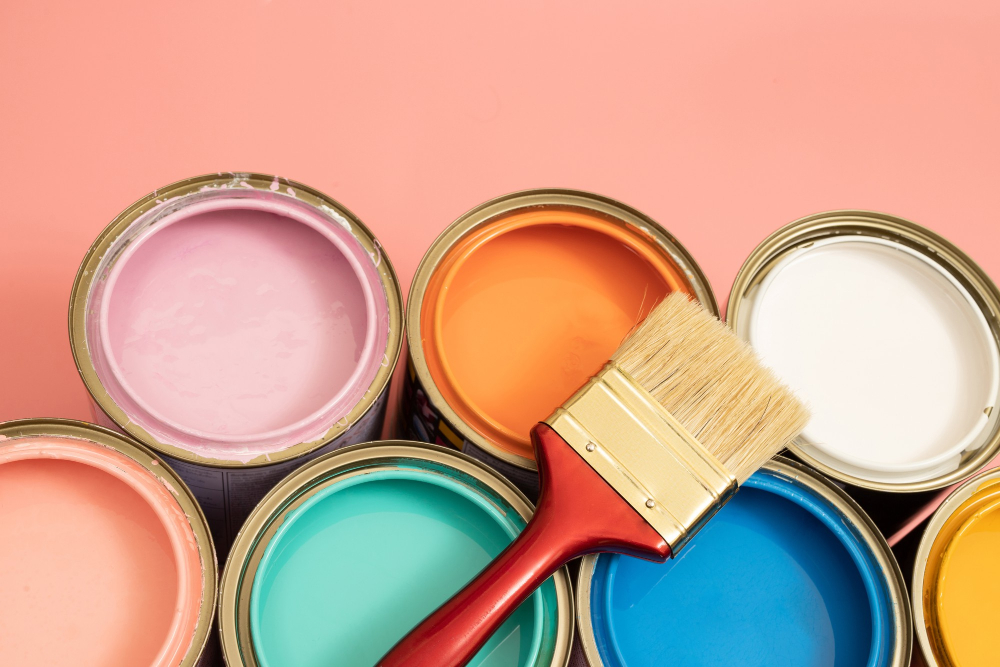
First and foremost, you want to choose a color that complements the overall style of your kitchen. If you have warm-toned cabinets and flooring, then choosing a cool-toned countertop might not be the best choice.
Another factor to keep in mind is how much natural light enters your kitchen. If you have limited natural light, then painting your countertops with darker colors may make space feel smaller and more cramped.
Lastly, think about what kind of mood or atmosphere you want in your kitchen. Do you prefer bright and cheerful colors or something more subdued? The good news is that there’s no shortage of paint options available on the market today – from classic neutrals like white or beige all the way up through bold hues like reds or blues – so finding just the right shade should be easy!
Painting Techniques
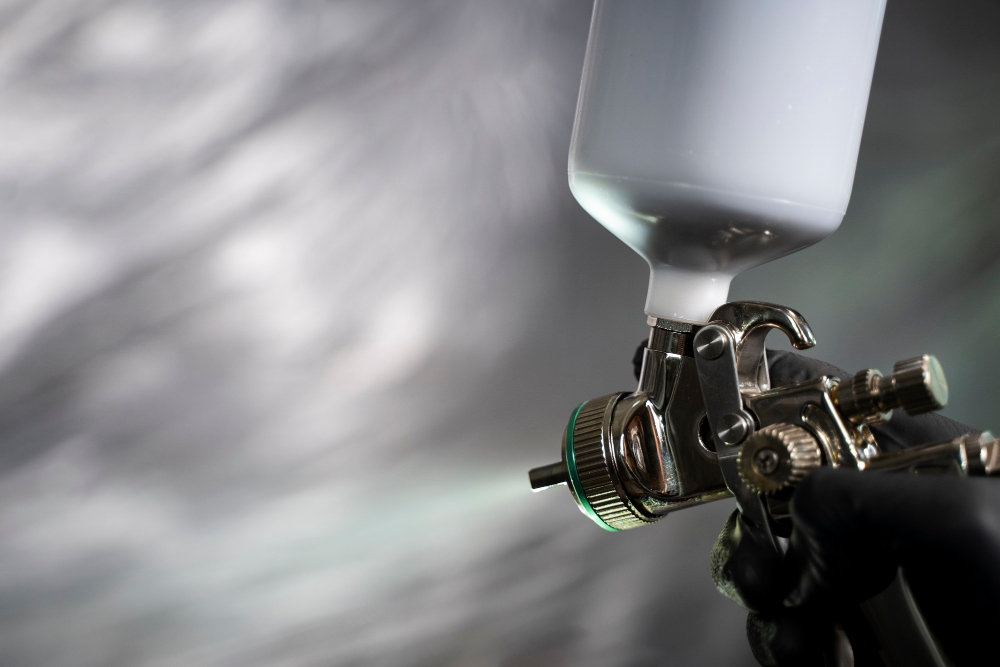
There are several techniques that you can use to achieve different finishes and textures on your countertops.
One popular technique is using a sponge roller or brush to create a textured finish. This method involves dabbing the paint onto the surface in random patterns, creating an organic look that mimics natural stone.
Another technique is using a spray gun or airbrush for more precise application of color and texture. This method allows you to create intricate designs and patterns with ease.
If you want your painted granite countertops to resemble other types of stone such as marble or quartz, there are specific techniques that can help achieve this effect. For example, by layering different shades of paint in thin veining lines across the surface, you can mimic natural veins found in marble slabs.
Adding Faux Finishes

There are many different techniques you can use to achieve this effect, such as sponging on multiple colors or using a feather duster for veining. You can also experiment with different shades of paint and glazes until you find the perfect combination that matches your kitchen’s decor.
One popular technique for adding faux finishes is called “sponging.” This involves dabbing on two or three complementary colors in random patterns using a sea sponge. The result is an organic-looking finish that mimics the variations found in natural stone.
Another technique involves using a feather duster dipped in paint or glaze to create veins throughout the countertop surface. This method requires some practice but can produce stunning results when done correctly.
When it comes to adding faux finishes, don’t be afraid to get creative! Experiment with different tools and techniques until you find something that works well for your space.
Painting Granite to Mimic Other Stone Finishes
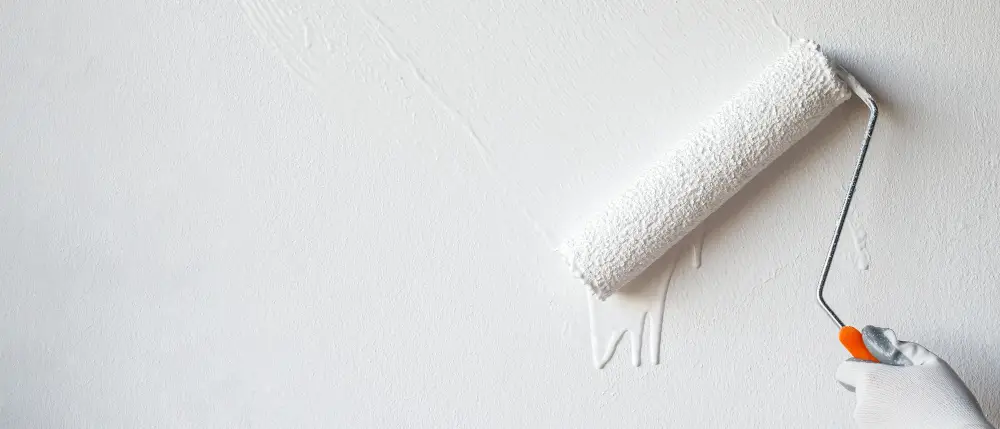
With the right techniques and tools, you can achieve the appearance of marble or even soapstone without having to pay for expensive materials.
To create a faux marble finish on your granite countertops, start by applying a base coat in white or light gray. Once it’s dry, use a sea sponge dipped in shades of gray paint to dab onto the surface randomly.
This will give it that natural veining effect found in real marble.
For those who prefer darker tones like soapstone but don’t want its high maintenance requirements, try using black chalkboard paint as an alternative. Apply two coats of this color over your existing granite countertop then sand lightly with fine-grit sandpaper once dried completely.
Sealing the Paint
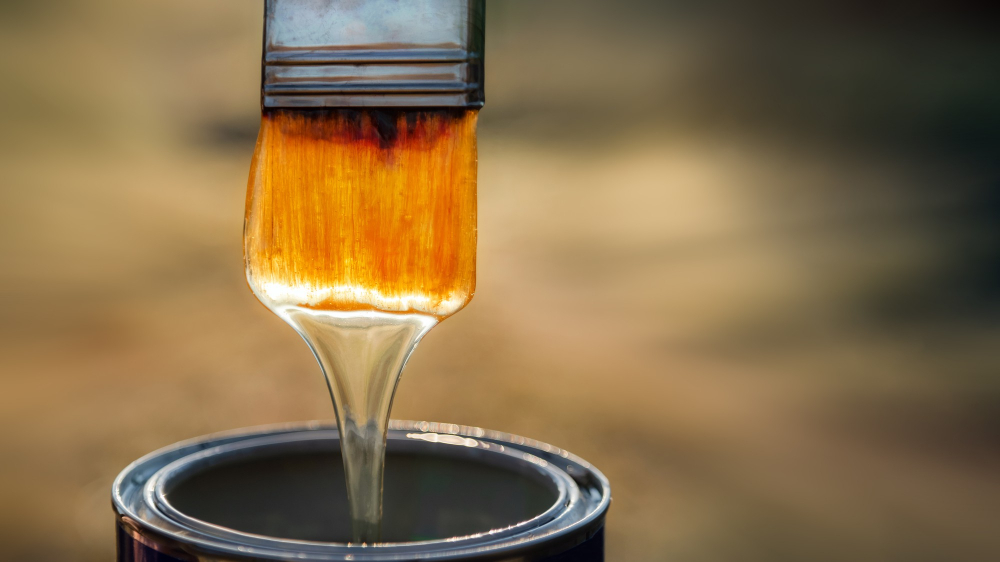
A high-quality sealer will also help preserve the color and shine of your newly painted countertops for years to come.
To seal the paint on your granite countertops, start by allowing them to dry completely according to the manufacturer’s instructions. Then apply a thin layer of clear acrylic or polyurethane sealer using a foam brush or roller.
Be sure not to over-apply as this can cause drips and unevenness in the finish.
Allow each coat of sealer ample time (usually 24 hours) before applying another one until you achieve an even coverage that is resistant enough for daily use. Once fully cured (usually after 72 hours), test its resistance by pouring water onto different areas on top; if water beads up instead of soaking into surface then congratulations! Your countertop is now sealed properly!
Drying and Curing Time

Drying time refers to the amount of time it takes for the paint on the surface of your countertop to become touch-dry. Curing time, on the other hand, is how long it takes for the paint film beneath that surface layer to fully harden and adhere.
Most countertop resurfacing kits will provide specific drying and curing times in their instructions. Generally speaking, you should expect a drying period of around 24 hours before applying any additional coats or sealants.
The curing process can take anywhere from three days up until two weeks depending on factors such as humidity levels and temperature.
It’s essential not only that you follow these guidelines but also avoid using or placing anything heavy onto your newly painted countertops during this period as they may damage or leave marks on them.
Post-Painting Care and Maintenance
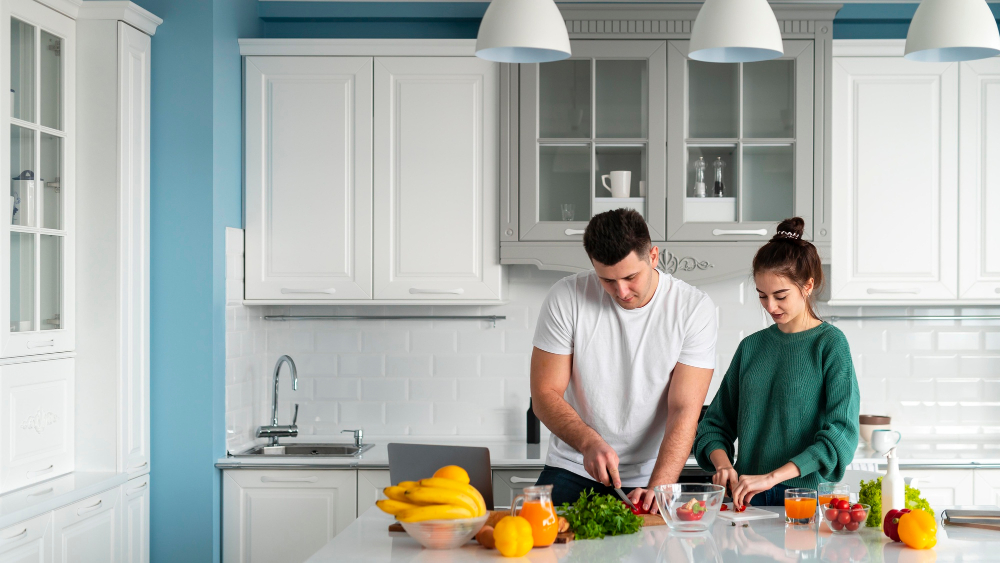
Here are some tips on post-painting care and maintenance:
1. Avoid placing hot pots or pans directly on the surface as this can damage the paint.
2. Use a cutting board when preparing food instead of cutting directly on the countertop.
3. Clean up spills immediately with a damp cloth and mild soap.
4. Do not use abrasive cleaners or scrubbers that could scratch or damage the paint finish.
5. Regularly apply a sealant over the painted surface to protect it from scratches, stains, and other damages caused by daily wear-and-tear.
Long-term Durability and Performance
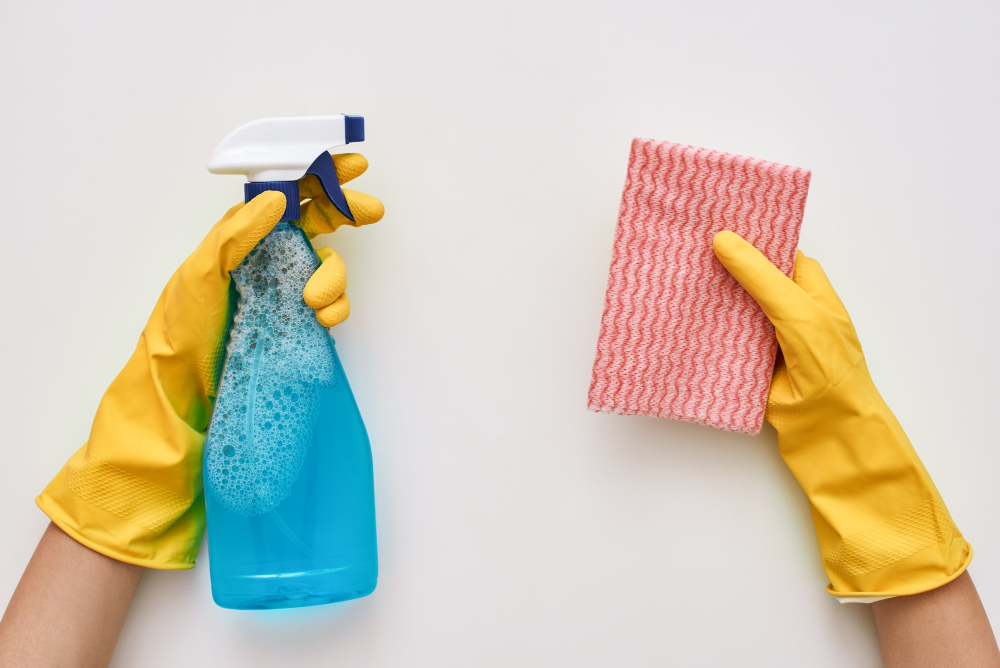
The good news is that with proper care and maintenance, your newly painted countertops can look great for years to come. However, it’s important to note that the durability and performance of painted granite countertops may not be the same as natural or engineered stone surfaces.
To maintain their appearance over time, avoid using abrasive cleaners or scrubbers on your new counters. Instead, use a soft cloth or sponge with mild soap and water when cleaning up spills or stains.
Avoid placing hot pots directly onto the surface of your countertop; always use trivets or heat-resistant pads.
It’s also worth noting that while painting granite can give it a fresh new look at an affordable price point compared to replacing them entirely – there are some limitations in terms of its longevity compared to other materials like quartzite which have better resistance against scratches and chips.
FAQ
Can granite countertop be painted?
Yes, granite countertops can be painted by applying a coating with a paint brush or roller, preferably using a granite countertop paint kit.
Is painting granite a good idea?
Painting granite is not a good idea due to the paint being less durable, not completely water-resistant, and prone to staining and flaking.
What is the best way to paint over granite?
The best way to paint over granite is to abrade the surface using sandpaper or an electric sander, ensuring thorough coverage, so that the primer and paint can stick properly.
How do you update granite countertops without replacing them?
To update granite countertops without replacing them, utilize the honing technique, commonly applied to marble and quartzite surfaces, for a cost-effective solution.
What types of paint are suitable for application on granite countertops?
Types of paint suitable for application on granite countertops include acrylic, latex, and epoxy paints.
How can one maintain the durability of painted granite countertops in the kitchen?
To maintain the durability of painted granite countertops in the kitchen, ensure regular cleaning with non-abrasive cleaners, avoid placing hot objects directly on the surface, and reapply sealant as needed.
Are there any specific precautions to follow when painting kitchen granite countertops?
When painting kitchen granite countertops, ensure proper surface preparation, use appropriate paint and sealant, and maintain adequate ventilation.
